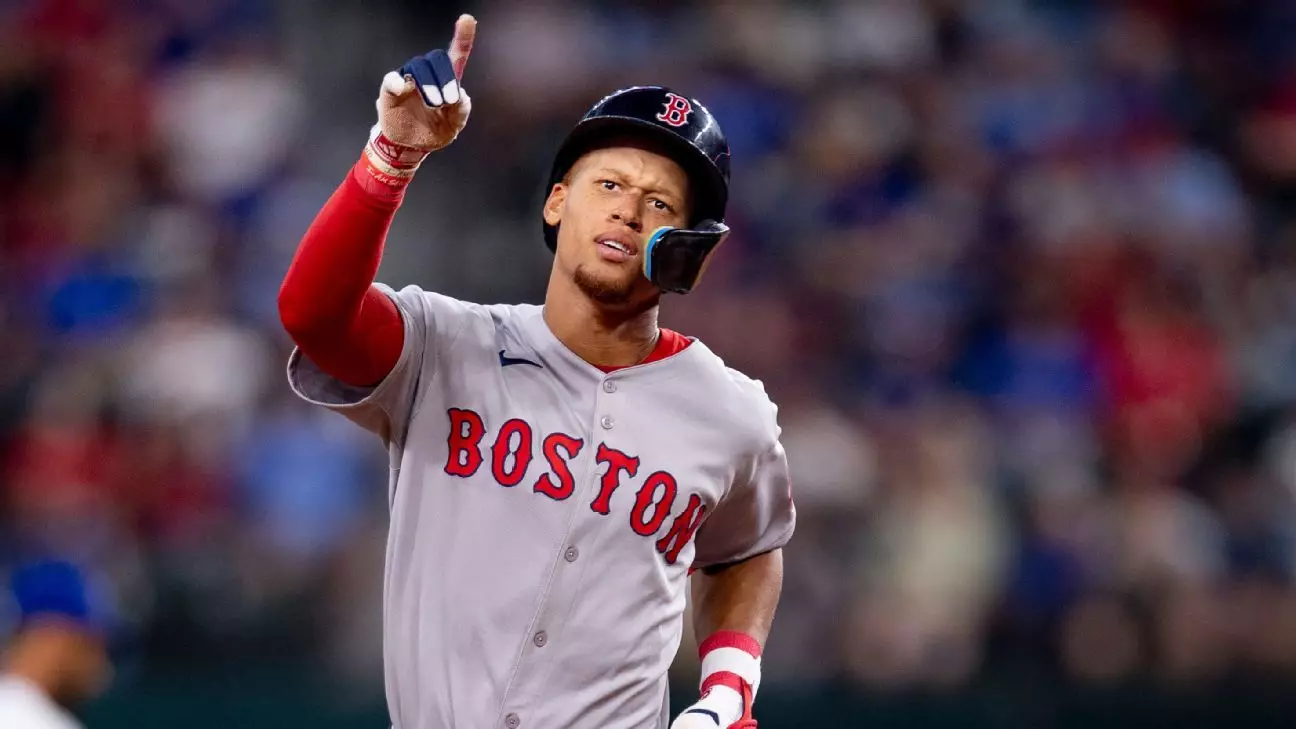In a strategic move indicative of the dynamic nature of Major League Baseball, the Boston Red Sox are sending promising rookie Kristian Campbell down to Triple-A. This decision comes as the team anticipates the return of outfielder Wilyer Abreu, who has been sidelined with an oblique strain. As has become all too familiar in the realm of professional sports, the balancing act between nurturing talent and vying for immediate competitiveness led the Red Sox to assertively reconfigure their roster.
Kristian Campbell’s ascension to the major leagues came amidst significant expectations. A fourth-round pick out of Georgia Tech, his meteoric rise was fueled by a remarkable 2024 season where he dominated various minor league levels, boasting a stellar batting average of .330 coupled with 20 home runs. This performance earned him the prestigious title of Minor League Player of the Year, prompting the Red Sox to lock him into an eight-year, $60 million extension before the start of the season. Such an investment signals the organization’s belief in Campbell’s potential to be a franchise cornerstone.
However, the stark reality of Major League play soon hit Campbell hard. After a promising April where he hit .301 and earned the American League Rookie of the Month accolade, his offensive production took a steep nosedive. His performance plummeted in May and June, where he struggled to produce at a meager rate of .159. This decline only underscores the unpredictability of transitioning from minor league dominance to the highly competitive atmosphere of the MLB.
The Consequences of High Expectations
The high expectations that accompany substantial contracts can weigh heavily on young athletes. For Campbell, being thrust into the everyday role of second baseman for the Red Sox came with intense pressures—not only to perform but to effectively replace the vacated spots left by trades of star players, including the recent move of slugger Rafael Devers to the Giants. The spotlight can be both a boon and a bane, and Campbell’s experience exemplifies the duality of such a scenario.
The Red Sox’s confidence in Campbell’s purported unique batting stance and impressive exit velocities seemed prudent early in the season; however, it became increasingly evident that a reset was in order. In less than two months, he transitioned from a cleanup position to batting near the bottom of the order, indicative of the team’s waning trust in his ability to contribute meaningfully. The demotion to Triple-A offers him a chance to recalibrate, refine, and ultimately regain his lost confidence.
Wilyer Abreu: A Fresh Opportunity
Abreu’s imminent return to the lineup serves a dual purpose—it not only reinforces the Red Sox’s competitive edge but also provides a pathway for Campbell’s further development without the intense scrutiny of major league games. Abreu, at 26, has battled his own injuries but has shown potential at the plate with a .245 average and 13 home runs this season. His rejoining the lineup injects both experience and talent into the Red Sox’s outfield, which is already bursting with depth.
This combination of young talent and seasoned players, like Abreu and Gold Glove candidate Ceddanne Rafaela, illustrates that the Red Sox are not merely reshaping their roster; they are rethinking their approach altogether. Caldwell’s situation is a reminder that in professional sports, the path is rarely linear. The turbulence he has faced can provide a learning curve that ultimately shapes a stronger athlete.
The Bigger Picture for Boston
Boston’s current season reflects a team in transition, evidenced by the mix of youth and veterans. They stand fifth in the league in runs scored, showcasing a lineup capable of explosive moments, yet the performances of young players like Campbell will be pivotal for long-term success. Balancing short-term performance with long-term investment in youth is an intricate dance that teams must master to thrive in today’s MLB landscape.
In essence, Campbell’s demotion is not a failure but rather an opportunity for growth. This reset might very well reignite the flames of his potential, allowing him to return to the big leagues more refined and ready for the challenges that await. For the Red Sox, patience paired with strategic roster management will be crucial as they seek to translate youthful exuberance into sustained success on the diamond. As the season progresses, all eyes will be on both Campbell’s resurgence and Abreu’s return, shaping the next chapter in the storied history of the Boston Red Sox.


Leave a Reply